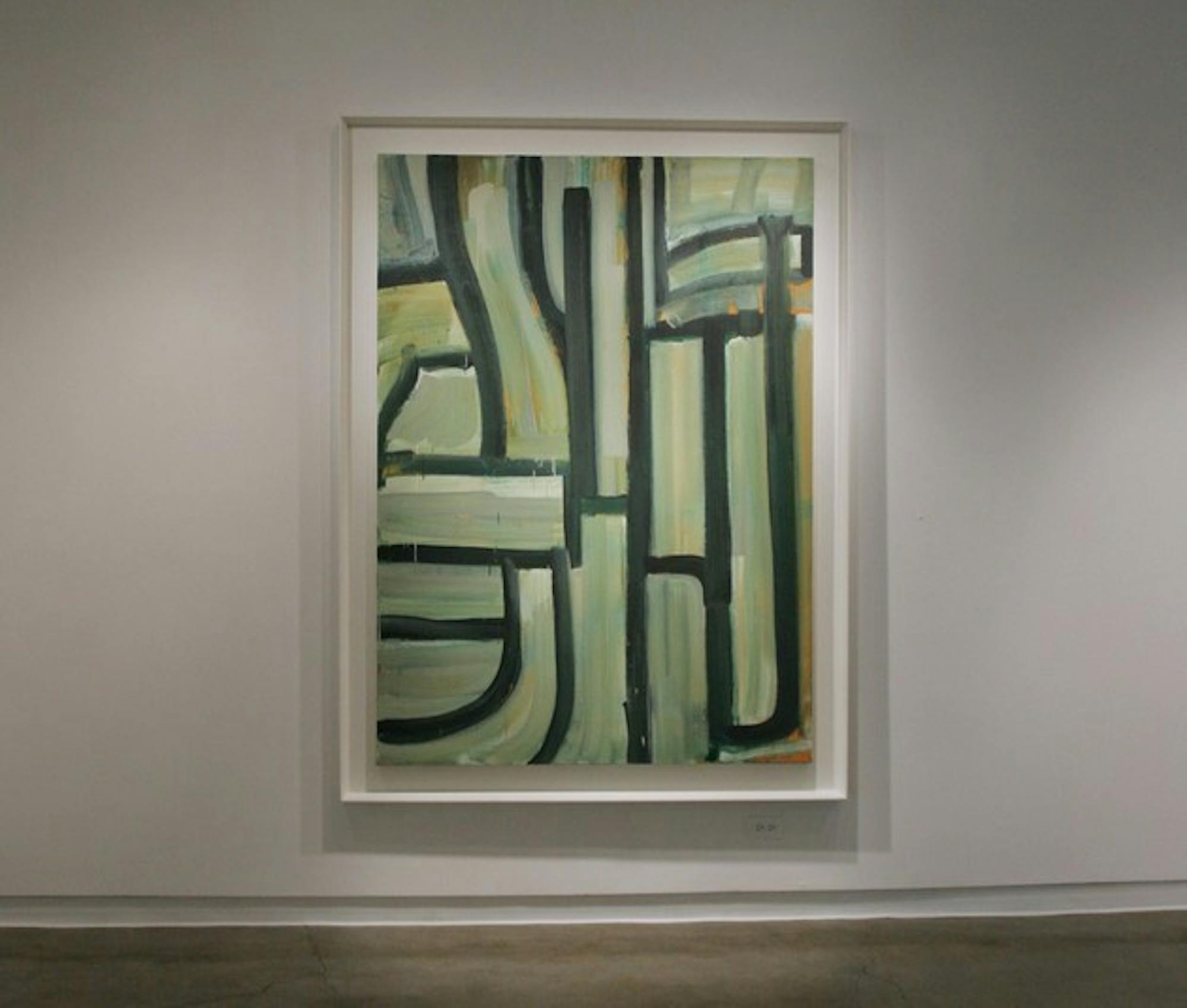With the latest of an eclectic series of artists-in-residence being labeled by the press as an abstract expressionist, I admit I suspected a somewhat mundane exhibit at the Jaffe-Friede Gallery in the Hopkins Center. I'm humbled to say that the self-proclaimed abstract artist Louise Fishman proved me wrong in every way. Through her exploration of material, texture and color in her current exhibit, "The Tenacity of Painting," Fishman remains a firm supporter of abstract expressionism and reflects its influences, while simultaneously challenging the boundaries and rules that were long ago established by the greats.
According to Fishman, the common thread among the selections, including works she created as early as 1970, "has to do with the grid and how the grid runs through much of my work."
The selections broadly range from the rough palette knife work of "Ashkenazi" (1978) to the open brush strokes of "Pallas" (1987) to the reconstruction of the remnants of former untitled paintings of the early 1970s. The presence of the grid does indeed remain throughout her work, which friend Faye Hirsch attributes in part to "her devotion to Mondrian and Agnes Martin."
Fishman's artistic influences may be apparent, but I could only begin to understand the Jewish-ness and feminism that are hinted at by noting the titles of some her works. "Ashkenazi" (1978) and "Karpas #4" (1988) reflect Fishman's appreciation for her Jewish cultural heritage, an appreciation that surged with a visit to Auschwitz in the late 1980s, and which evidently marked a huge turning point in her life.
"I didn't have a choice about it, I had to face something very serious," Fishman said of the trip. "Coming back, I felt completely undone by it, and I didn't have a clue about how to begin working as an artist again."
Another major crisis earlier in Fishman's life was the screeching halt of her painting altogether in the early 1970s. Painting as an art form was being questioned at the time; artists were dabbling in more experimental media. Fishman played a part in this changing world: Her work is currently shown as a part of National Academy's "High Times, Hard Times: New York Painting 1967-1975."
At the same time, she was beginning to reconsider the masculine world of abstract painting, which had traditionally left no room for women or minorities.
Fishman explained her temporary departure from painting: "The women's movement was such a dramatic thing that I had to rethink my work again because I hadn't thought of how painting was so much about the boys, so I just got rid of everything that was male in my work."
Her two Untitled rigidly grid-like works, similar in their grayish coloring and lines created by the use of rope, are positioned on either side of the doorway in the smaller back room of Jaffe-Friede.
Not that all of Fishman's works were inspired by the serious. The roughly gouged vertical and horizontal lines of "Green Wood" (1994) were inspired by a dream about a vine. Note the stark white streaks of "Blonde Ambition" (1995) on the right wall of the gallery; it's made in reference to one of her idols, Madonna.
Madonna and other lifelong influences will be addressed in tonight's panel discussion, "Painting and Writing: Relationships Old and New" in the Jaffe-Friede Gallery. The discussion will feature Fishman and poet Gerald Stern, who Fishman calls "a sparkling guy."
As friends since the late 1950s, when Fishman studied poetry writing under Stern at the Tyler College of Art, both have come a long way in their respective arts. Colleen Randall, professor of painting in the studio art department and organizer-moderator of the discussion, explained that "they will discuss the commonalities of poetry and painting as well as talk about the relationship of their art forms to the tradition of the past and present." The discussion "will also focus on personal experience in art, the relationship of Jewish identity to their work, the economics and politics of art, feminism and their recent book collaboration."
As for Fishman, she promises to "wing it."




